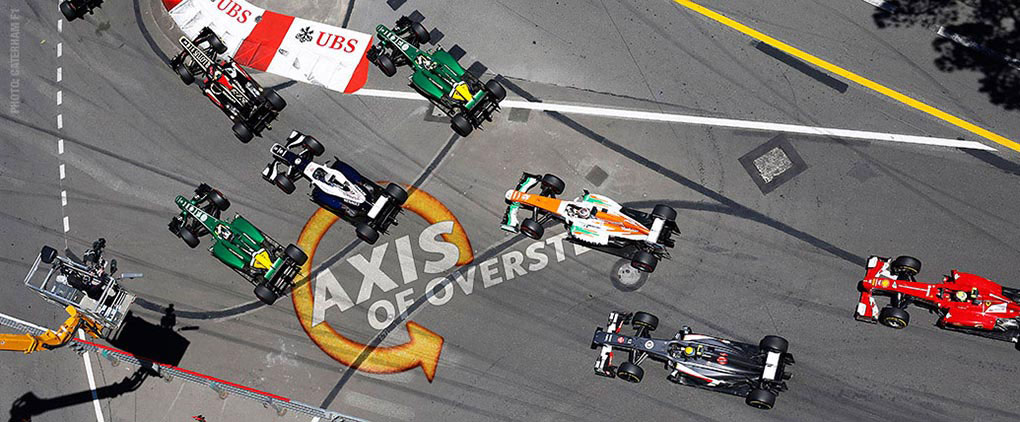The FIA International Tribunal is meeting June 20th to hear the case from Pirelli and Mercedes and deal punishment if it deems it necessary.
Mercedes are expected to show evidence they had a written authorization from someone in the FIA to proceed with the test, something that would be deeply embarrassing for the governing body. Race director Charlie Whiting has been mentioned more than once, if the authorization came from him it would be especially troubling.
There are two issues at play here with regards to any presumed advantage the Brackley team may have gained in those 1000 km of "private, not secret" testing: Tire knowledge and track time. Our technical editor Filippo Zanier has some thoughts on that and the weak performance from Lotus in the last two races.
By Filippo Zanier:
After the Canadian GP, I found myself thinking about how the Pirelli-Mercedes testgate has monopolized the attention of both media and fans lately. While I think it's understandable, and that certain people calling this "a storm in a teacup" are probably driven by interest, I feel that all the controversy has distracted us a lot from what was happening on track.
What we saw both in Monaco and Montréal has a lot to do with tyres, but that would be very true even if that ill-famed Barcelona test had never existed. And couldn't we pretend it didn't, just for a while? In the end, If Pirelli are true (and I hope they are), the new spec tyres won't be available before the Belgian Grand Prix, so whatever "future spec" rubber Mercedes tested in Barcelona still hasn't come into play. Sure, the extra mileage didn't hurt them, and there's a chance the new rear suspension geometry was tested there, but do you really believe that's the only reason why they won in Monaco and were quite ok in Montréal? Well I don't.
Today I was lucky enough to have a conversation with a racing driver to prepare a Le Mans story for an Italian mag, and he gave my thoughts some support.
The guy is a former F1 driver that is now a top runner in the GTE class, and is still in touch with many Circus players. What he told me sounded more or less like this: "Everybody in F1 knows that Red Bull has a clear edge on the competition in terms of downforce. In Montréal and Monaco that proved to be a big advantage for Vettel but with this year's tyres, at other tracks that could even be an hindrance".
My "mystery man" knows what he's saying. The paddock rumormill has already been talking about the RB9's huge downforce figures, often citing secret data gathered by Pirelli as the source, but hints of that impressive aero load can also be found in numbers that aren't secret at all, the top speeds from the 2013 races. Looking at the speed trap data, the Red Bulls are always slowest among the top cars: sometimes the gap isn't so big (it was only 4 kph in Australia), sometimes it's astonishing like in Barcelona, where Alonso was 12 kph faster than Vettel on the main straight. So, like last year, Mr. Newey was happy to trade some speed for more downforce, but sure he wasn't expecting Pirelli to make it worthless.
Unluckily, he soon discovered that the 2013 Italian rubber doesn't cope well with the huge loads his car is generating. The RB9 is bloody quick, no doubt about it, but when it's driven like it should tyres overheat quickly and start suffering from heavy wear much earlier then expected, ending in the four pit-stops we saw in Barcelona and in Christian Horner publicly ranting against the Italian company. And at that time, the Mercedes test wasn't even on the radar.
In Monaco and Montréal, the story was different. On two tracks that put less strain on tyres, and in colder temperatures, overheating wasn't an issue at all. On the contrary, Red Bull managed to bring the right amount of heat in their rubber earlier than the competition, an advantage that proved to be crucial. Furthermore, being able to unleash all of their downforce without having to worry about tyres allowed them to have a better planted car, with positive effects on tyre wear.
This also explains why the Lotus-Renault was far off the pace in Canada: the car that so far had been the most gentle on tyres was too gentle for those asphalt conditions, struggling for grip all the time.
So, what should we expect from now on? Silverstone being a proper track, with hi-speed corners and recently laid tarmac, I believe that we'll see Mercedes struggling with heavy tyre wear once again. The same goes for Red Bull: on the british track their downforce will prove very useful, but how will that impact on their tyre wear and race strategy? I see them topping the timesheets, but will that be enough to win the race? Luckily, we just have to wait a few days to know...



.jpg)

.jpg)
.jpg)
Now that Britain has been run and won,it's pretty obvious merc did indeed gain an advantage from the test
ReplyDelete